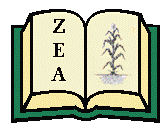Files
Download Full Text (7.0 MB)
Description
Based on an analysis of 47 years (1967–2014) of Audubon Christmas Bird Counts (CBC), evidence for population changes and shifts in early winter (late December) ranges of nearly 150 species of birds in the Great Plains states is summarized, a region defined as including the Dakotas, Nebraska, Kansas, Oklahoma, and the Texas panhandle. The rationale for this study had its origins in Terry Root’s 1988 Atlas of North American Wintering Birds. Root’s landmark study provided a baseline for evaluating the nationwide winter distributions of 253 North American birds in the mid-20th century, using data from the National Audubon Society’s annual CBC surveys from 1962–63 through 1971–72. A later summary (P. A. Johnsgard and Tom Shane, Four Decades of Christmas Bird Counts in the Great Plains: Ornithological Evidence of a Changing Climate, 2009) provided range maps and quantitative population data (expressed as the average number of birds tallied per party-hour) for all 210 species reported from the 1967–8 to the 2006–7 CBC, on a decade-to-decade basis. The present analysis includes all of the 40 annual CBC surveys from the 1967–8 to the 2006–7 counts, plus the results of the most recent 2013–14 CBC. The present summary quantitatively describes the early winter abundance for 147 of the most commonly encountered regional species, illustrating their temporal changes in geographic distributions and relative abundance between 1967 and 2014.
Over this 47-year period there has been a progressive winter warming trend regionally, and associated ecological changes, influencing the early winter regional abundance and geographic distributions of many birds. The great majority these changes have involved northward shifts in early winter distributions. Over this approximate half-century interval at least six species (Canada goose, mallard, black-capped chickadee, American goldfinch, and house finch) have shifted their areas of greatest early winter abundance two states northward, and the centers of maximum abundance of at least ten other species have shifted northward by at least one state. Milder and less stressful early winter temperatures, with associated extended periods of ice-free water and greater access to snow free foraging sites, are believed to be responsible. These recent population shifts have been most evident in the northern half of the region, where increases in mean January temperatures have been greatest. Nearly all of these population and distributional changes can be attributed to recent climate changes in the Great Plains. Approximately 500 literature citations are included
ISBN
978-1-60962-065-3
Publication Date
2-20-2015
Publisher
Zea Books
City
Lincoln, NE
Keywords
climate change, ornithology, population, winter, distribution
Disciplines
Animal Sciences | Behavior and Ethology | Climate | Ecology and Evolutionary Biology | Environmental Indicators and Impact Assessment | Environmental Monitoring | Meteorology | Natural Resources and Conservation | Oceanography and Atmospheric Sciences and Meteorology | Ornithology | Other Earth Sciences | Population Biology | Terrestrial and Aquatic Ecology
Recommended Citation
Johnsgard, Paul A., "Global Warming and Population Responses among Great Plains Birds" (2015). Zea E-Books Collection. 26.
https://digitalcommons.unl.edu/zeabook/26

Included in
Behavior and Ethology Commons, Climate Commons, Environmental Indicators and Impact Assessment Commons, Environmental Monitoring Commons, Meteorology Commons, Natural Resources and Conservation Commons, Ornithology Commons, Other Earth Sciences Commons, Population Biology Commons, Terrestrial and Aquatic Ecology Commons


Comments
Text and drawings copyright © 2015 Paul A. Johnsgard.